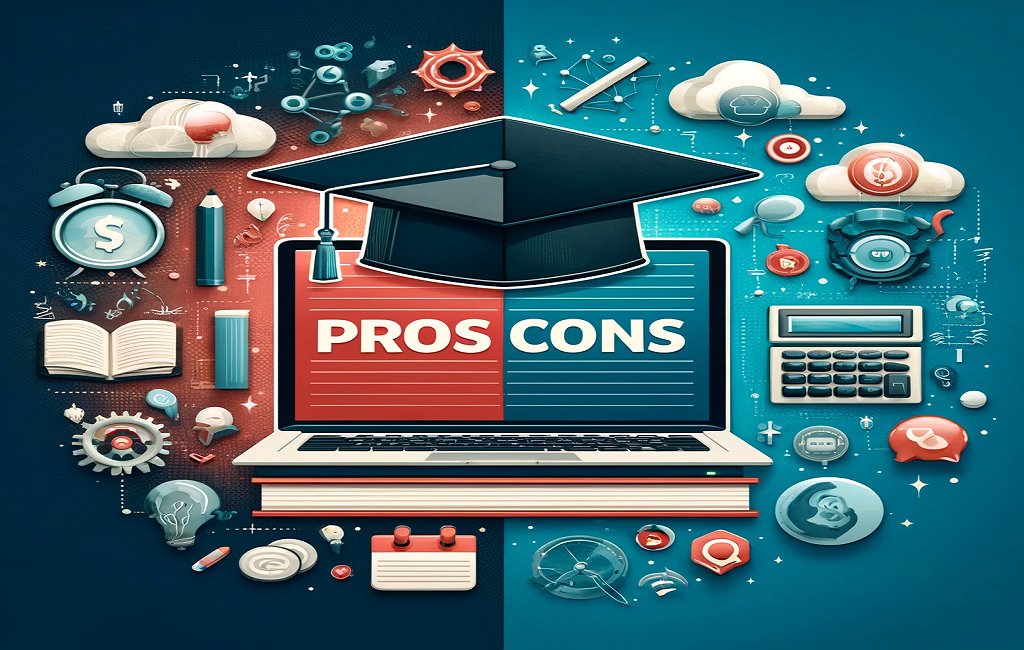
American public universities are integral to the United States higher education system, offering accessible and affordable education to millions of students each year. Unlike private institutions, public universities are primarily funded by state governments, which helps keep tuition costs lower and provides a broad array of academic programs. These institutions are known for their diverse course offerings, flexible scheduling options, and robust support systems designed to help students succeed academically and professionally.
Choosing the right university is a significant decision that can shape one’s future career and personal growth. Understanding the pros and cons of American public universities is essential for prospective students seeking to make informed choices. This article will explore the advantages and disadvantages of attending a public university in the U.S., providing a well-rounded perspective based on experience and expertise. Whether you seek affordability, diverse academic opportunities, or vital career preparation, this guide will help you weigh your options and decide if a public university fits you.
Table of Contents
Overview of American Public Universities
American public universities are established and operated by state governments, providing education primarily to residents of their respective states. These institutions often receive funding from state taxes, which helps subsidize tuition costs, making them a more affordable option than private universities. Public universities range from large research institutions to smaller regional colleges, each offering unique programs and resources.
The history of public universities in the United States dates back to the early 19th century, with the establishment of institutions like the University of North Carolina and the University of Michigan. These universities were created to provide accessible education to a broader population, emphasizing public service, research, and community engagement.
Public universities typically offer undergraduate and graduate programs encompassing multiple fields of study, including the arts, sciences, business, engineering, and more. They are known for their extensive research facilities, diverse student bodies, and numerous extracurricular activities that enhance the college experience.
One of the defining characteristics of American public universities is their commitment to inclusivity and diversity. These institutions strive to create a supportive environment for students from all backgrounds, providing resources such as financial aid, academic advising, and career services to help students succeed.
In the following sections, we will explore the specific advantages and disadvantages of attending an American public university, helping you understand the potential benefits and challenges associated with these institutions.

Pros of American Public Universities
Affordability
One of the most significant advantages of American public universities is their affordability. Public universities generally offer lower tuition rates compared to private institutions, particularly for in-state students. This affordability is due to state funding, which helps subsidize the cost of education. Additionally, many public universities offer financial aid packages, scholarships, and grants further to reduce the financial burden on students and their families.
Diverse Course Offerings
Public universities are known for their wide range of academic programs and courses. Students can choose from various disciplines, from the liberal arts to the sciences and professional programs. This diversity allows students to explore different fields of study and tailor their education to their interests and career goals. Moreover, public universities often offer interdisciplinary programs that combine multiple areas of study, providing a well-rounded educational experience.
Flexible Scheduling
Another key benefit of attending a public university is flexibility in scheduling. Many public universities offer part-time, evening, and online courses to accommodate students with different needs and responsibilities. This flexibility is particularly beneficial for non-traditional students, such as working professionals, parents, and those seeking to balance education with other commitments. By providing various scheduling options, public universities make it easier for students to complete their degrees at their own pace.
Networking Opportunities
Public universities offer numerous networking opportunities for students. With large student bodies and extensive alum networks, students can connect with peers, professors, and professionals in their fields of interest. These connections can lead to valuable internships, job opportunities, and mentorship relationships. Public universities also host various events, such as career fairs, workshops, and industry conferences, where students can meet potential employers and expand their professional networks.
Financial Aid Options
Public universities provide a range of financial aid options to help students afford their education. These options include federal and state grants, scholarships, work-study programs, and student loans. Public universities often have dedicated financial aid offices that assist students in navigating the application process and finding the best financial aid packages available. Public universities offer various financial assistance to ensure that higher education is accessible to a broader population.
Career Preparation
Public universities are committed to preparing students for successful careers. They offer numerous resources, such as career counselling, job placement services, and internship programs, to help students transition from academia to the workforce. Many public universities have strong ties with local industries and businesses, providing students with opportunities to gain practical experience and build professional skills. Public universities often host career fairs and networking events, where students can meet potential employers and learn about job openings in their fields.
Cons of American Public Universities
Large Class Sizes
One of the challenges of attending a public university is the large class sizes. With high student enrollment, many public universities have classes that can contain hundreds of students, especially for introductory courses. This can make it difficult for students to receive personalized attention from professors and engage in meaningful class discussions. While some students may thrive in this environment, others may struggle to stay motivated and succeed academically.
Limited Individual Attention
Due to the sizeable student-to-faculty ratio, individual attention can be limited at public universities. Students may have fewer opportunities for one-on-one interactions with professors and advisors, which can impact their academic and personal development. This can be particularly challenging for students who require additional support or guidance to succeed. While many public universities offer tutoring and mentoring programs to address this issue, the availability and effectiveness of these resources can vary.
Administrative Bureaucracy
Administrative bureaucracy is another potential drawback of attending a public university. With extensive and complex organizational structures, public universities can sometimes be slow to respond to student needs and concerns. Navigating administrative processes, such as registration, financial aid, and academic advising, can be time-consuming and frustrating. Students may encounter delays or difficulties in resolving issues, impacting their educational experience.
Variability in Quality
The quality of education and resources at public universities can vary widely. While some public universities are renowned for their academic excellence and research facilities, others may struggle with funding and resource limitations. This variability can affect the availability of courses, the quality of instruction, and the overall student experience. Prospective students must research and evaluate individual public universities to ensure they choose an institution that meets their academic and personal needs.
Funding Challenges
Public universities face funding challenges due to state budget cuts and fluctuating financial support. These challenges can impact various aspects of the university, including faculty hiring, facility maintenance, and program development. Public universities may sometimes need to increase tuition or reduce services to cope with funding shortfalls. This can create additional financial burdens for students and affect their education quality.
Personal Opinion
As someone deeply invested in the education sector, I believe that American public universities offer a unique blend of affordability, diversity, and opportunity that can be incredibly beneficial for many students. The flexible scheduling options and extensive networking opportunities are noteworthy, as they cater to many student needs and career aspirations. However, acknowledging it is essential to believe that things such as large class sizes and administrative bureaucracy are necessary for the student experience. Ultimately, prospective students should carefully weigh these pros and cons and consider their circumstances when deciding whether a public university is the right choice.
Conclusion
American public universities provide a valuable and accessible option for higher education, offering numerous benefits such as affordability, diverse course offerings, and vital career preparation. However, they also come with challenges, including large class sizes and variability in quality. By understanding the pros and cons of public universities, students can make informed decisions about their educational paths and choose institutions that align with their goals and needs.
FAQs
Which is better: public or private school in the USA?
The choice between public and private schools in the USA depends on individual preferences, financial considerations, and academic goals. Public schools are generally more affordable and offer diverse programs, while private schools may provide smaller class sizes and specialized curricula.
Is public education good in America?
Public education in America varies in quality, but many public schools and universities offer high-quality education and ample resources. The effectiveness of public education often depends on funding, location, and specific institutions.
What is the difference between state and public universities in the USA?
State universities are public institutions funded by state governments, while public universities can include state-funded and federally-funded institutions. The terms are often used interchangeably, but state universities specifically refer to those supported by state government funds.
Why are universities in the U.S. so good?
American universities are known for their high academic standards, diverse programs, and strong research capabilities. They attract top faculty and students worldwide and foster an environment of innovation and excellence.
What are the benefits of the American public school system?
The American public school system provides accessible education to a broad population, offering various programs and opportunities. It promotes diversity, inclusivity, and community engagement, preparing students for various careemultiple and civic responsibilities.

